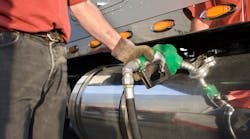Late last year, Cummins posted an article titled Five Ways Fleets Can Improve Fuel Economy. I’ve commented before that even though fuel prices today are low, it’s always a good idea to pay attention to improving fuel efficiency.
The Cummins article listed these five areas for fleets to use in their fuel efficiency efforts:
- Drivers
- Maintenance
- Equipment
- Spec’ing to duty cycle
- Parameter settings
We know from our work on Run on Less that drivers matter. You can put all the efficiency technology on a truck you want, but if the person behind the wheel engages in aggressive driving practices you won’t get the gains you are hoping for. Talk to any one of the seven drivers from the Run or watch some of the videos on the Run on Less website where the drivers talk about what they are doing to get the most out of a gallon of fuel.
Maintenance is not often looked at as a way to boost fuel economy, but if you think about it there are a host of areas that if not properly maintained will increase fuel use. Cummins identified things like tire pressure, aerodynamic devices and the engine itself. In our Confidence Report on Preventive Maintenance, 75% of fleets responding to a survey said they see a strong or very strong link between maintenance and fuel economy. A good place to start is by following OEM recommendations and referring to the Technology & Maintenance Council’s Recommended Practices. Make sure you are tracking PM compliance so that trucks are not missing scheduled maintenance appointments.
Selecting the right powertrain is one of the most effective ways to improve fuel economy, Cummins says. Our Confidence Report on Automated Manual Transmissions found that fleets could expect to see an average 1% to 3% improvement in fuel economy from AMTs. An added bonus is they help with driver attraction and retention.
Duty cycle matters when it comes to vehicle specs. Match specs to things like load and terrain so you will get both performance and fuel economy.
Most engine manufacturers now offer over-the-air programming making it easy for fleets to change engine parameters to optimize for fuel economy. Even if changes can’t be made over the air, it’s still worth it to use parameters to optimize fuel economy. It is one of the things fleets can do that comes at no cost other than a little time. According to our Confidence Report on Electric Engine Parameters there are six categories of parameters that help with fuel economy: vehicle speed limits, vehicle configuration information, engine speed limits, idle reduction, driver rewards a miscellaneous MPG-related.
I will be speaking on a panel next week at the Truckload Carriers Association Annual Convention along with Ranae Isaak, Cummins’ expert on these things and I am really looking forward to hearing more. As you know there is no one thing that will get you to your fuel economy goals but focusing on the five areas Cummins suggested will go far to get you where you want to be.



